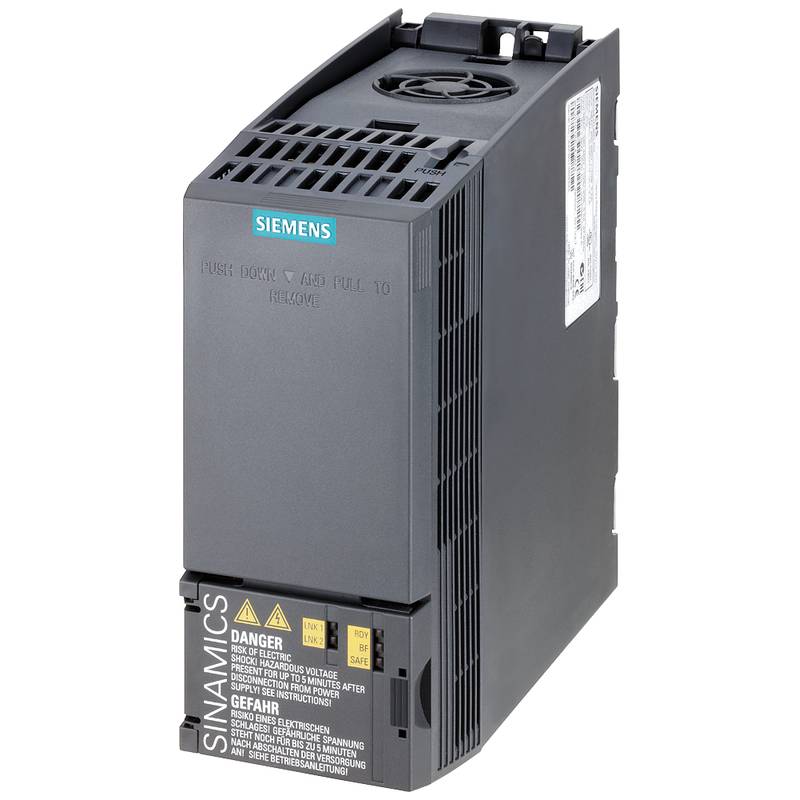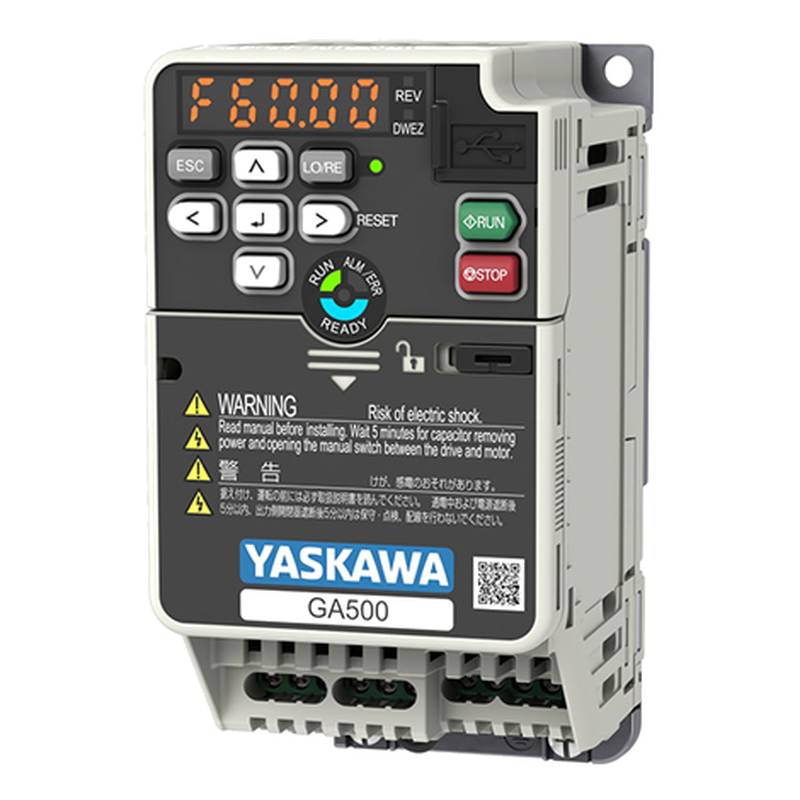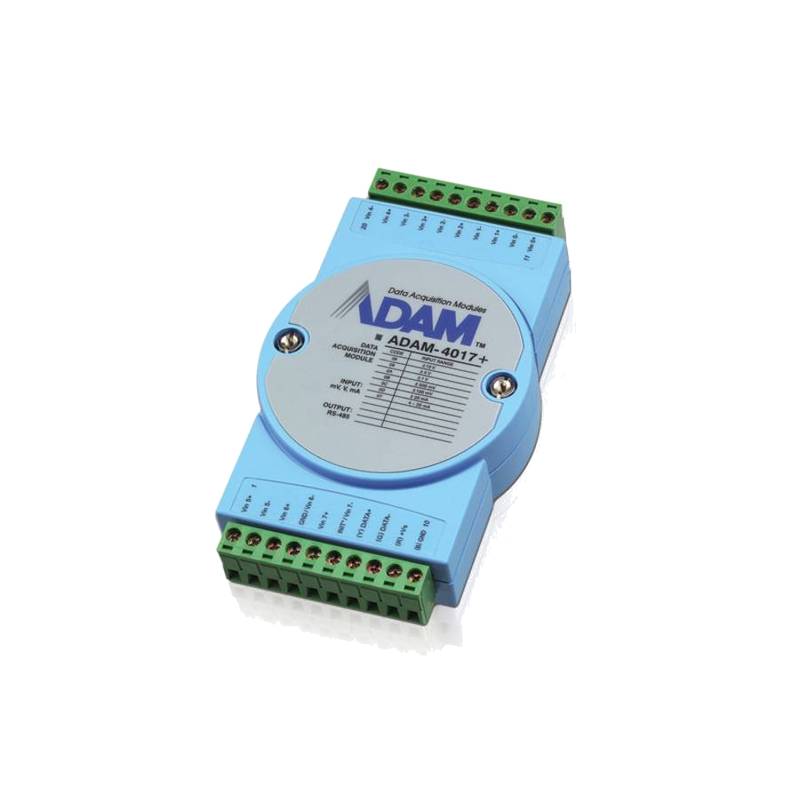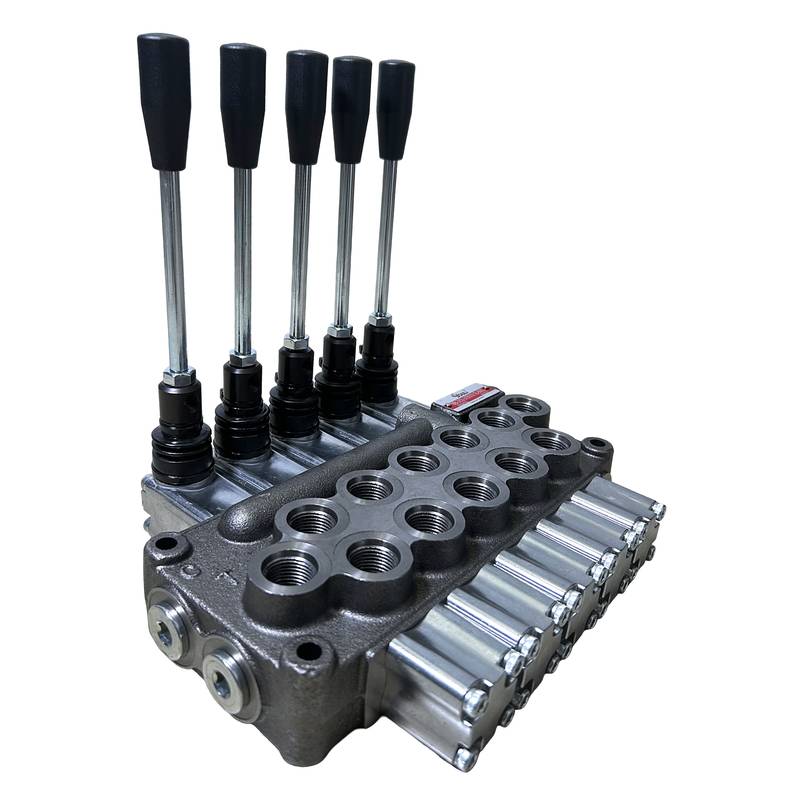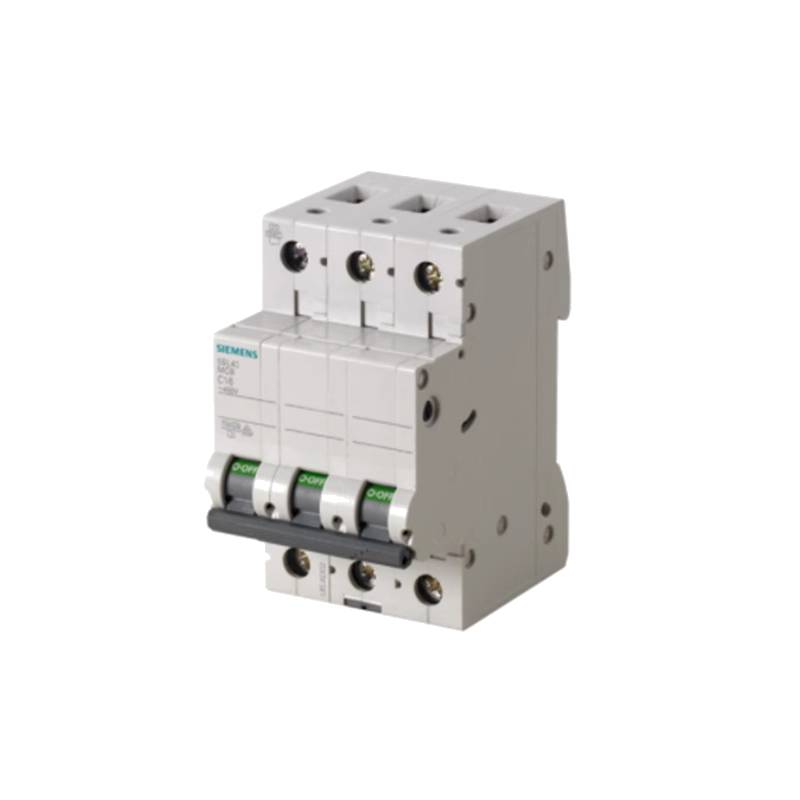
The Siemens 5SY6505-7CC is a robust double-pole overload protection circuit breaker designed for demanding industrial environments, offering reliable safeguarding for electrical circuits. Its key advantages lie in its precise tripping characteristics, compact design, and adherence to stringent international safety standards, ensuring operational continuity and equipment protection. This 1P+N breaker, rated at 0.5A, is engineered for swift fault interruption, minimizing downtime and potential damage.
Product Specifications
| Feature | Specification |
| :------------------ | :------------------------------------------ |
| Manufacturer | Siemens |
| Product Series | 5SY6 |
| Model Number | 5SY6505-7CC |
| Type | Double Pole Overload Protection Circuit Breaker |
| Poles | 1P+N (Single Pole + Neutral) |
| Rated Current (In) | 0.5 A |
| Breaking Capacity (Icn) | 6 kA (at 230/400 V) |
| Tripping Curve | C |
| Voltage Rating (Ue) | 230/400 V AC |
| Frequency | 50/60 Hz |
| Terminal Type | Screw Terminals |
| Mounting Type | DIN Rail (35mm) |
| Operating Temperature | -25 °C to +45 °C |
| Protection Class | IP20 |
| Standards | IEC/EN 60898-1, IEC/EN 60947-2 |
Core Features & Market Positioning
The Siemens 5SY6505-7CC stands out due to its highly accurate thermal-overload and electromagnetic trip mechanisms, providing superior protection against sustained overcurrents and short circuits, respectively. Its C-curve tripping characteristic ensures it can handle typical inductive loads, such as motors, without nuisance tripping, while still offering rapid response to fault conditions. Positioned as a dependable component for essential circuit protection in commercial and light industrial applications, it competes on reliability and Siemens' reputation for quality. The compact 1P+N configuration saves valuable panel space, a critical factor in modern electrical installations.
Key Application Scenarios
This Siemens 5SY6 circuit breaker is ideally suited for protecting individual circuits in control panels, motor starter circuits, and distribution boards where precise current monitoring and reliable tripping are paramount. It is frequently employed in applications requiring safeguarding of low-power motors, lighting circuits, and sensitive electronic equipment from overloads and short circuits. Typical sectors benefiting from its application include building automation, machine building, and small-scale manufacturing facilities where consistent power delivery and equipment longevity are crucial.
Practical System Integration Guidance
Integrating the Siemens 5SY6505-7CC into existing systems is straightforward due to its standard 35mm DIN rail mounting. Ensure the incoming power supply lines are connected to the designated input terminals, and the protected load is connected to the output terminals. Proper wiring according to local electrical codes and the breaker's voltage and current ratings is essential for safe and effective operation. For installations involving multiple circuit breakers, maintain adequate spacing to prevent heat buildup and ensure efficient heat dissipation.
Operation and Risk Mitigation
The primary function of the Siemens 5SY6505-7CC is to interrupt the electrical circuit automatically when an overcurrent or short circuit condition is detected, thereby preventing damage to connected equipment and mitigating fire hazards. Users should be aware that the tripping mechanism is designed to operate under fault conditions; frequent tripping may indicate an undersized circuit, a faulty load, or improper wiring, requiring investigation. Always ensure the breaker is in the "OFF" position before attempting any wiring or maintenance. Resetting a tripped breaker should only occur after the fault condition has been identified and rectified.
Scalability & Long-Term Value
While the 5SY6 series is designed for specific protection tasks, its compatibility with the broader Siemens industrial control and automation ecosystem provides long-term value. Although this specific model is a fixed-rating device, scalability can be achieved by incorporating it into larger Siemens-based control systems, allowing for centralized monitoring and control if integrated with compatible devices. Its robust construction and adherence to international standards ensure a long operational lifespan, reducing the need for premature replacements.
Frequently Asked Questions
What is the breaking capacity of the Siemens 5SY6505-7CC?
The Siemens 5SY6505-7CC boasts a breaking capacity of 6 kA. This is crucial for safely interrupting fault currents. It ensures the breaker can handle significant electrical faults.
This specification makes it suitable for many industrial and commercial applications. It provides a reliable safety margin against severe electrical events.
The 6 kA rating aligns with common protection requirements in distribution boards and control panels. It is a key parameter for system design and safety compliance.
How do I reset the Siemens 5SY6505-7CC circuit breaker?
To reset the Siemens 5SY6505-7CC, first ensure the fault condition has been resolved. Then, firmly push the toggle switch to the "OFF" position. After that, move the switch decisively to the "ON" position.
Do not force the breaker if it trips again immediately. Persistent tripping indicates an underlying issue needing professional diagnosis. Always prioritize safety during reset operations.
Consult the Siemens technical documentation for detailed troubleshooting steps if the breaker repeatedly trips. Proper fault identification is key to a lasting solution.
What does 1P+N mean for the Siemens 5SY6505-7CC breaker?
1P+N signifies that the Siemens 5SY6505-7CC is a single-pole plus neutral circuit breaker. It interrupts both the live (phase) and neutral conductors simultaneously. This provides complete isolation for the protected circuit.
This type of breaker is essential for circuits where disconnecting the neutral is required for safety. It ensures that no current can flow even if the neutral connection is inadvertently made.
It differs from a standard single-pole breaker that only interrupts the phase. The inclusion of the neutral pole offers enhanced protection in specific electrical configurations.
What is the appropriate wiring method for the Siemens 5SY6505-7CC?
The Siemens 5SY6505-7CC uses screw terminals for its electrical connections. Ensure that the conductor size is appropriate for the 0.5A rating. Strip the insulation to the correct length for secure contact within the terminal.
Always connect the line conductor to the top terminal and the load conductor to the bottom terminal, following standard practice. The neutral conductor is connected to its designated terminal. Proper torque on the screws ensures a reliable and safe connection, preventing overheating.
Adhere strictly to local electrical codes and regulations during installation. Double-check all connections before energizing the circuit to prevent short circuits or improper operation.
Can the Siemens 5SY6505-7CC be used for motor protection?
Yes, the Siemens 5SY6505-7CC can be used for protecting small motors. Its C-curve tripping characteristic is suitable for inductive loads like motors. It offers protection against overloads and short circuits.
For larger motors or applications requiring specific overload settings, consider dedicated motor protection circuit breakers. These offer adjustable trip points for more precise protection.
Ensure the breaker's 0.5A rating and 6kA breaking capacity are sufficient for the motor's starting current and fault level. Verify this against motor nameplate data.
What is the significance of the 'C' curve on the Siemens 5SY6505-7CC?
The 'C' curve indicates the breaker's tripping characteristics for short-circuit currents. It's designed to tolerate higher inrush currents typical of inductive loads. This prevents nuisance tripping in applications with motors or transformers.
This curve allows for a slightly delayed trip for short-circuit currents between 5 and 10 times the rated current. This characteristic is crucial for applications where equipment might momentarily draw more current upon startup.
For loads with very high inrush currents, such as large transformers, a 'D' curve breaker might be more appropriate. The 'C' curve offers a balance for common industrial and domestic applications.
What are the environmental operating conditions for the 5SY6505-7CC?
The Siemens 5SY6505-7CC is designed to operate within a temperature range of -25°C to +45°C. This broad range ensures reliable performance in various industrial climates. It also has an IP20 protection rating, guarding against solid objects larger than 12.5mm.
Avoid installing the breaker in environments with excessive dust, moisture, or corrosive gases. Such conditions can degrade performance and compromise safety over time. Regular inspection and cleaning may be necessary in harsh settings.
Ensure adequate ventilation around the installed breaker to prevent overheating, especially when multiple units are housed in a confined enclosure. This helps maintain optimal operating temperatures for longevity.
What standards does the Siemens 5SY6505-7CC comply with?
The Siemens 5SY6505-7CC complies with key international safety and performance standards. It meets the requirements of IEC/EN 60898-1, which governs circuit breakers for household and similar installations. Additionally, it adheres to IEC/EN 60947-2 for low-voltage switchgear and controlgear.
These certifications indicate that the product has undergone rigorous testing for electrical safety, performance, and reliability. Compliance ensures that the breaker functions as intended and meets global industry benchmarks.
Adherence to these standards is critical for ensuring the safety of electrical installations and personnel. It also facilitates integration into systems designed for international markets.
How does the 0.5A rating affect its applications?
The 0.5A rating signifies that the Siemens 5SY6505-7CC is intended for circuits with very low current consumption. It is ideal for protecting sensitive electronic equipment, control circuits, or low-power ancillary devices. This rating prevents damage from even minor overloads.
Using a breaker with an appropriate current rating is crucial for effective protection. A rating that is too high will not trip during a fault, leading to equipment damage. A rating that is too low might trip unnecessarily during normal operation.
This specific rating makes it unsuitable for high-power loads or general distribution circuits. Its application is limited to precisely defined low-current protection scenarios.
What is the difference between a 1P+N and a 2P circuit breaker?
A 1P+N circuit breaker, like the 5SY6505-7CC, protects one live (phase) conductor and the neutral conductor. It switches both simultaneously, offering complete circuit isolation. This is important for certain earthing systems and safety requirements.
A 2P (two-pole) circuit breaker interrupts two live conductors. This is commonly used in systems with two phases or specific voltage configurations, such as 230V from two phases. It provides isolation for both conductors.
The choice between 1P+N and 2P depends on the electrical system's design and the required safety protocols. Always consult system schematics and local regulations for correct selection.
















